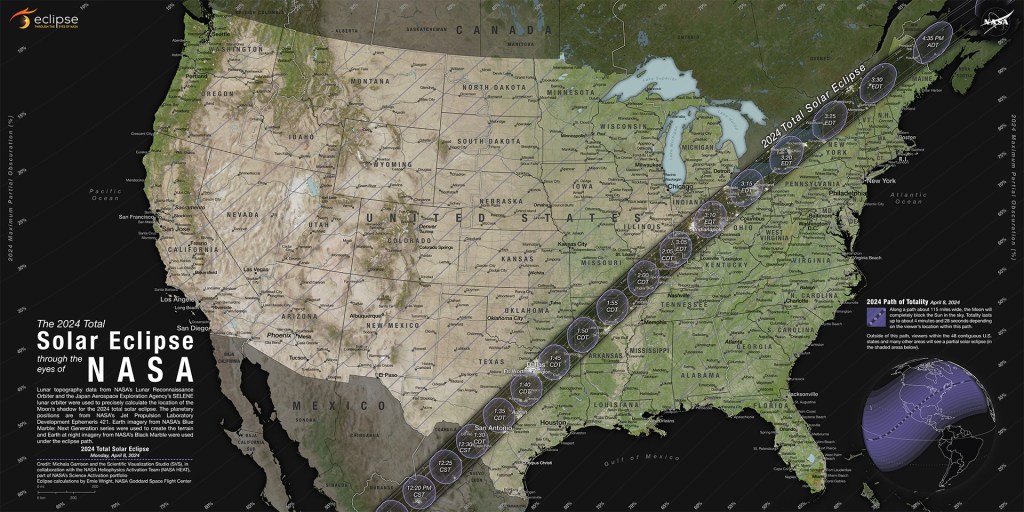Follow along as the solar eclipse journeys across the United States — with the moon momentarily blocking the sun for over 180 million people living in its path, including some lucky upstate New Yorkers, who will take in the celestial extravaganza Monday afternoon.
The highly anticipated eclipse will travel from Mexico’s Pacific Coast up to the coast of Newfoundland, Canada, hitting 15 US states along the way.

While over 180 million people will be in the eclipse’s path, including some 32 million Americans living in the path of totality, clouds may prevent parts of the southern and central US from witnessing the natural phenomenon.
The eclipse will last for several hours surrounding almost four minutes of darkness in the zone of totality — a narrow band of about 100 miles that stretches from Mexico to Maine and beyond.
Everything to know about the 2024 solar eclipse
- The solar eclipse will take place Monday, April 8, blocking the sun for over 180 million people in its path.
- The eclipse will expand from Mexico’s Pacific Coast across North America, hitting 15 US states and pulling itself all the way to the coast of Newfoundland, Canada.
- New Yorkers will experience the solar eclipse just after 2 p.m. Monday.
- A huge explosion on the sun, known as a coronal mass ejection, is anticipated, according to experts. This happens when massive particles from the sun are hurled out into space, explains Ryan French of the National Solar Observatory in Boulder, Colorado.
- To avoid serious injury to the eyes, it is necessary to view the event through proper eyewear like eclipse glasses, or a handheld solar viewer, during the partial eclipse phase before and after totality.
- The next total solar eclipse will take place on Aug. 12, 2026, and totality will be visible to those in Greenland, Iceland, Spain, Russia and a small slice of Portugal.
Those looking to take in the eclipse are urged to view the event through proper, NASA-approved eyewear like eclipse glasses, or a handheld solar viewer, to avoid eye damage.
The eclipse will enter the US in Texas and travel through Oklahoma, Arkansas, Missouri, Illinois, Kentucky, Indiana, Ohio, Pennsylvania, New York, Vermont, New Hampshire and Maine. Small parts of Tennessee and Michigan will also experience the total solar eclipse, NASA said.
The eclipse will exit continental North America on the Atlantic coast of Newfoundland, Canada, just after 3:30 p.m. EST.

It will be the last time a total solar eclipse passes over a large part of the U.S. until 2044.
Another total solar eclipse won’t be visible from New York again until 2079, when the zone of totality will include the five boroughs.














